The current scooters are technically no longer comparable to the scooters or mopeds of the past. The modern scooter is actually a completely new concept of individual transport which is very smart and thoughtful, but also a bit quirky. Many scooter drivers do not realize with what chunk of technology they are on the road, and that is of course no shame. As long as the scooter does what it is supposed to do and it guides you through traffic in a convenient and safe way, you will probably like it all. Rightly so, and we at Scooterland also want you to think of nothing but happy scooter driving. However, we cannot resist giving you a deeper insight into the technique of the scooter.
The frame
The frame of a modern scooter consists of a steel tube frame that is welded together by a welding robot. Tabs are welded to this steel tube frame to which the plastic sheeting is attached. These plastic parts are only for embellishment and have no load-bearing or constructional function. What they do of course is to give each scooter its own face. The underlying frame often differs little or not at all, while a different model can be created by using other plastic parts.
The advantage of the steel frame with the plastic parts attached to it is that in the event of a fall, often only one or a few plastic parts need to be replaced and the scooter is like new again.
The self-supporting steel construction of a Vespa LX
An important exception to this concept of steel frame and plastic plating is the Vespa scooters that have a fully self-supporting sheet steel frame without plastic plating. This makes the Vespa scooters of course extra robust, but they have the disadvantage that after a crash a somewhat more expensive damage repair must be performed. Just like with cars, it is necessary to dent and spray. The advantage is again that small damage often only gives a dent in the sheet steel, while with other scooters this quickly entails fragmentation of the plastic part.
The rear suspension
Actually, the rear suspension is the secret of the modern scooter. Because of the clever construction of the rear suspension, scooters could be equipped with a step-less automatic shift and space was also created under the saddle for the helmet box. How exactly does that work? A normal, old-fashioned moped or motorcycle has an engine block with a hinge point for the rear fork in which the rear wheel is mounted.
With the modern scooter, the engine block also serves as a rear fork and the front of the engine block hinges in the frame. The engine block with a scooter therefore has a triple function. Not only does it take care of the drive, but the engine block is also part of the frame and serves as a hinged swingarm. Because the engine is made of strong and rigid aluminum, a single-sided swingarm and therefore a single-sided suspension and only 1 rear shock absorber will suffice.
The rear suspension of a Yamaha Neos
Incidentally, the engine block is not directly attached to the frame but via a small hinged bridge which is suspended in rubbers. This flexible connection ensures that it takes the greatest blows when, for example, the scooter is driven through a pit in the road. This relieves the frame and the engine block and it is actually the case that this rubber-suspended bridge ensures that a scooter rides so comfortably.
The front suspension
Most scooters are equipped with a normally functioning suspension fork. In some cases, however, other techniques are used. Especially with sporty scooters such as the Piaggio NRG and the Gilera Runner an up-side-down fork is mounted, resulting in a lower unsprung weight and tighter road holding. The more expensive scooters are often equipped with a hydraulic front fork, which significantly improves road handling during sporty driving. The hydraulic oil provides better damping and is less likely to break under hard braking.
The Vespa scooters are again an exception here. They use a swing arm suspended on one side as a fork. A more expensive and heavier construction that offers a comfortable and very good road holding and an extra anti-dive effect with hard braking.
The drive
The modern scooter has a step-less automatic that works with a V-belt that connects 2 adjustable pulleys. The first pulley sits directly on the crankshaft and controls the adjustment. This is done via 6 weights in the form of plastic rolls with a steel inner wall, which are thrown out by the centrifugal force. If you accelerate with the scooter, the crankshaft will rotate faster and the 6 rollers in the pulley on the crankshaft are pushed out.
These outwardly pressed rolls press harder and harder against one cheek of the front poulie. The cheeks of the tapered pulley come closer together and the V-belt is increasingly expressed. The pulley has now step-less moved from a small diameter to a large diameter.
In the second pulley at the rear wheel is a large compression spring that presses against one pulley cheek. When the crankshaft adjusts the pulley, it automatically adjusts the diameter of the second pulley and keeps the V-belt under tension so that it does not slip. If the front pulley is set to small, the rear one to large and vice versa. The pulleys and the V-belt thus form the automatic gearbox of the scooter.
Incidentally, we can be proud of this technology in the Netherlands, because years ago it was first conceived and applied by the Dutch DAF.
The V-belt drive of a scooter
On the rear pulley is also a clutch consisting of 2 parts that look like brake shoes, which are also provided with friction material just like a brake shoe. This coupling is enclosed in a steel drum. The faster the pulley turns, the more the brake shoes are pressed against the drum, the drum turns and the scooter starts to drive.
This coupling is adjusted by tension springs on the brake shoes which determine the force of the compression. This coupling ensures that the motor of the scooter can run without the scooter driving and that it can already run at a higher speed with more power when accelerating from a standstill if it would be possible without this coupling. The clutch drives a gearbox which lowers the speed and drives the rear wheel.
A good choice between the weight and dimensions of the rollers in the front pulley and the pulling force of the springs in the rear pulley determines how a scooter accelerates and accelerates to its top speed. With a standard scooter that comes straight from the factory, after a long experiment, the manufacturer has determined the right choice for a certain adjustment of the engine.
If the top power of the scooter would also be changed by increasing the scooter or if the characteristic of the engine block is changed, the drive should actually also be changed. The advice is never to experiment with other roles or links. It may seem easy and there are many beautiful sets for sale (which we call junk at Scooterland, by the way), but this often ends very badly.
At certain revs, you may win, but at other revs, you lose a lot of power in the block. And, of course, it can be even worse: totally melted drives that are left with nothing, and even serious engine damage is possible with associated serious workshop bills to put it back in order. to create more power at a higher RPM, which will compromise power at low RPM and in the mid-RPM range.
Exterior view of scooter drive
Good scooter tuners work the other way around; they try to create a smooth running engine at low revs, nice, strong mid-range torque and top power that is built up evenly. Unfortunately, the Netherlands has only a few good scooter tuners and the remaining 98% cannot otherwise be described as outright scooter destroyers.
Conclusion: think twice before performing a scooter and actually it's even simpler: just don't start! It is bad for the scooter, bad for your own safety and that of other road users and it often costs (a lot of) money, especially if the results turn out to be not as you imagined.
The engine block: 2-stroke and 4-stroke:
Most scooters are still equipped with a 2-stroke engine, but the 4-stroke engines are gaining ground. In general, 4-stroke engines are more expensive to purchase than 2-stroke. On the other hand, they are also more economical and theoretically have a longer lifespan. They also have longer maintenance intervals.
Two-stroke and four-stroke engines are both piston engines. The difference is mainly in the way the fuel and air mixture enters the cylinder and the exhaust gases leave the cylinder. With 2-stroke engines, this is done via flushing ports and with 4-stroke engines this is done via valves. This seems like a small difference, but this difference ensures that a 2-stroke and a 4-stroke are completely different engines with large differences and their own advantages and disadvantages.
The 2-stroke engine is simple and cheap to manufacture, light in weight, delivers the highest power per cylinder capacity, but also has the highest fuel consumption. In addition, a 2-stroke has the least moving parts and another important point is that the whole must be lubricated with 2-stroke oil and this oil is largely burned, which in turn leads to greater oil consumption. Two-stroke engines are therefore worse for the environment due to their high emissions.
In terms of engine characteristics, a 2-stroke engine delivers high power at high speed and low power and torque at low speed. For this reason, 2-stroke engines are still used in the 125 cc and the 250 cc Grand Prix Road Race.
How does a 2-stroke engine work?
When the piston goes up, under pressure is created in the crankcase. Open the plates of the diaphragm on the crankcase and air is drawn in through the diaphragm by the carburetor. There is a venturi in the carburetor, which also creates negative pressure here and petrol is sucked in through a jet.
This atomized petrol thus comes together with the air drawn into the crankcase and under the piston. When the piston goes down, the pressure in the crankcase increases and the diaphragm plates close. As the piston drops further, the pressure in the crankcase increases. The cylinder contains channels (flush ports) that are closed from above by the piston when it moves upwards.
Cylinder, connecting rod and crankshaft of a 2-stroke block
The piston now goes up again and closes the flushing ports and then also the exhaust port through which the gas has been expelled. When the piston goes up further, the pressure above the piston increases sharply and when it is almost above the spark plug ignites the mixture. The mixture burns and expands enormously, which increases the pressure and the piston is pressed down with force. This opens the exhaust port again and the exhaust gases leave the cylinder via the exhaust ports and the exhaust.
Cross-section cylinder and flush ports 2-stroke block
The piston in turn drives the crankshaft via the connecting rod, which converts the up and down movement of the piston into a rotary movement. This rotating movement is ultimately transferred to the rear wheel via the drive.
How does a 4-stroke engine work?
A 4-stroke engine is more complex, heavier, more expensive to manufacture and has more moving parts than a 2-stroke engine.
However, a 4-stroke is more economical in fuel consumption, more environmentally friendly and uses less oil. All cars are equipped with 4-stroke engines and Formula 1 also uses four-stroke technology.
The operation is as follows:
When the piston goes down, the inlet valve opens and the air is drawn in by the carburetor, which is mixed with petrol vapor in the carburetor. When the piston is down, the inlet valve closes and the piston goes up. When the piston is almost up, the spark plug ignites the mixture and the piston goes down with force. When the piston is down, the exhaust valve opens and when the piston goes up again, the burned gases are pushed out through the piston through the exhaust valve. When the piston is up, the outlet valve closes and the inlet valve opens again when the piston goes down. Then everything repeats again as just described.
Cross-section cylinder + valves 4-stroke block
Another difference with 2-stroke technology is the operation of the spark plug. With a 2-stroke engine, the spark plug ignites every time the piston is on top, with a 4-stroke engine this is alternating. One time the spark plug will ignite when the piston is up, the next it will not ignite when the piston is up. Hence the name 4-stroke: the piston makes 4 movements before it gets ignition again and a 2-stroke engine makes 2 movements with 1 spark plug ignition.
The four-stroke engine of a Vespa LX scooter
The intake and exhaust valves are driven by a camshaft which either pushes the valves directly (with an overhead camshaft) or indirectly (with an underlying camshaft) push the valves via pushrods. An overhead camshaft is driven from the crankshaft via a chain, belt or sprockets. The piston drives the crankshaft via the connecting rod, which converts the up and down movement into a rotary movement.
Lubrication of a 4-stroke engine is often done with an oil pump that pumps oil from the crankcase to the moving parts. This oil then flows back to the crankcase and, unlike a 2-stroke engine, does not enter the combustion chamber and is therefore not burnt or repelled through the exhaust. A very small amount of oil is “leaked” into the combustion chamber as an oil film with the piston rings and through the valves, which means that a 4-stroke engine must always (also) have to use a small amount of oil. A very large oil consumption indicates wear or a part that is broken.
The ignition:
In the past, the inflammation had contact points that determined the ignition time. Unfortunately, contact points were unreliable because they were subject to wear. Contact points had to be readjusted over and over again and even replaced over time. In earlier times, the ignition was the weak point of a 2-stroke or 4-stroke petrol engine.
Today, all scooters are equipped with a so-called electronic ignition without contact points and the moment of ignition is electronically controlled. These electronic ignitions are also available in different versions with specific advantages and disadvantages. The development of electronic ignitions has also not stopped. In recent years, enormous progress has been made by applying a different ignition time at each speed.
As a result, the engines have become more economical and environmentally friendly and provide more power. The current generation of electronic ignitions therefore ensures that the ignition timing can be perfectly controlled in all circumstances. You as a scooter driver will also notice this. A good starting scooter that runs fine in every speed range is the result.
Fuel injection:
Fuel injection is now possible with both 2-stroke and 4-stroke engines. A limited number of scooters have this technique.
With 4-stroke engines, fuel injection has been used for years, especially in automotive engineering. Instead of a carburetor, there is an injector in the same place, which atomizes the petrol under high pressure. Fuel injection with 2-stroke engines is a completely different story. This has only been technically possible for a few years and some manufacturers have had major problems with this in the initial period.
With a 2-stroke engine with fuel injection, the fuel is injected directly into the cylinder head under high pressure. Piaggio has the best and most reliable system on the market in this area, although it is fair to say that even this very advanced system is still less reliable than a carburetor version. The big advantage is that engines with fuel injection are much more economical and can deliver more power than an engine that is equipped with a traditional carburetor.
The combustion is also cleaner so that the environment is less burdened. Major advantages, which are mainly achieved because the electronic control of the injection ensures that the engine runs perfectly at any speed. Piaggio uses a piece of Dutch top technology for this modern technique,
The technically advanced engine of a Yamaha T Max 500 cc scooter
The engine of a Piaggio X9 500 cc; one chunk of power


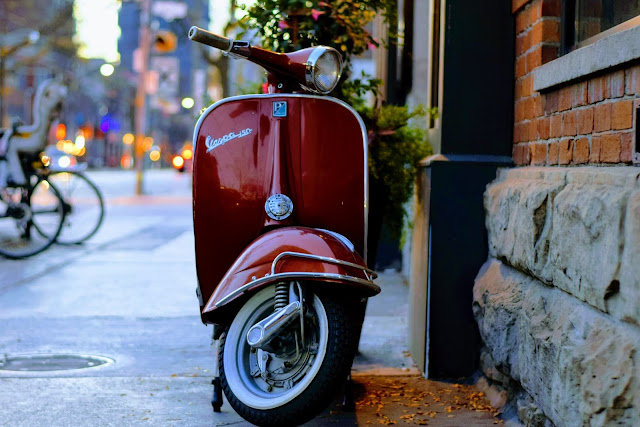
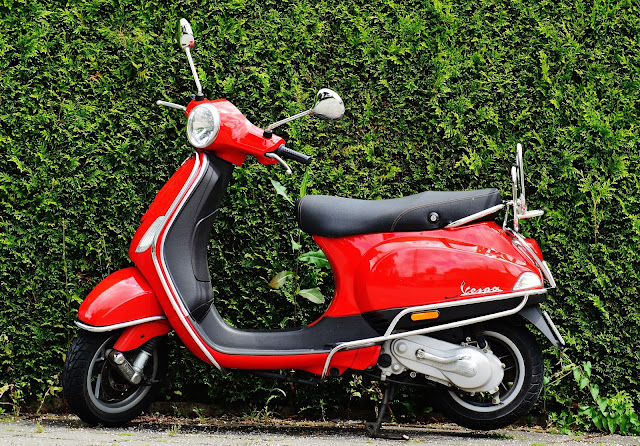
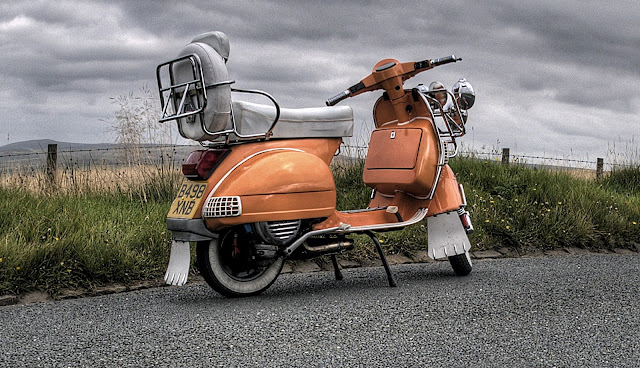



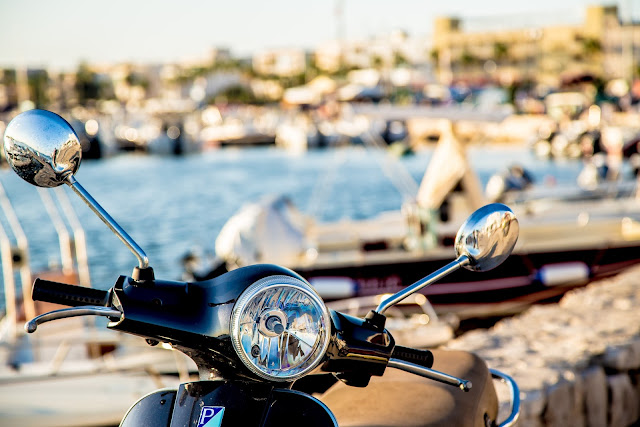
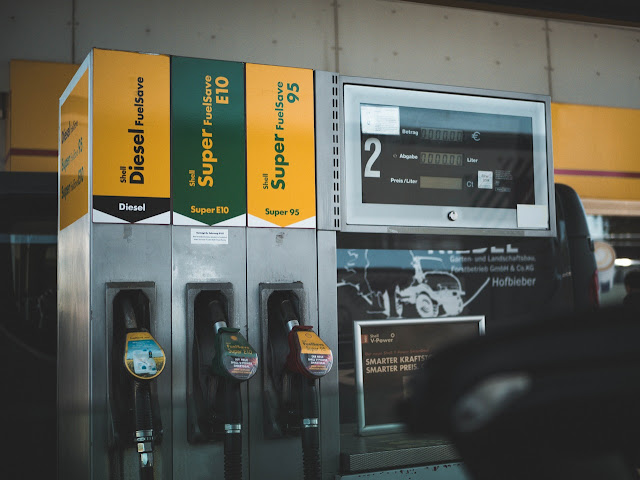
Post a Comment